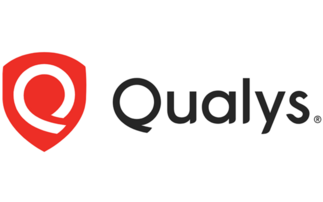
We all harbor unconscious bias. It's the natural result of what we've been exposed to. But we can challenge our preconceptions by acknowledging it and so we can then address it. We often only associate this thought process with how we interact with or toward people, cultures and lifestyles. However, the same principles still stand for how we as technologists approach our work and qualify prospective technologies. To be explicit, I'm not putting the two on the same level, merely pointing out the pattern in behavior.
This stands especially true around the topics of modernisation, legacy and mainframe. And it's totally understandable, like I said, we are a product of our own exposures. We have been told time and again that mainframes are old, new tech is better than old tech, languages like COBOL are hard, and modernisation means putting everything in the cloud.
But to accept these as fact - as we all are guilty of from time to time - is to buy into the bias, and not think critically or independently. Yes, they may well hold true in some instances, but sweeping assumptions can dramatically hold back technology and business decision making. The message here is "don't tear down the house to install a new kitchen." And when you do want to refurbish, not everything has to go. It's your pre-existing biases that are telling you otherwise.
Existing applications and infrastructure represent significant business investment. Often, these "legacy" systems are the core of the business. Tearing them out and reprogramming - often to produce the same end result - can be very costly, accrue huge amounts of technical debt, and more often than not, under deliver the value they promised.
So where are we going wrong? Or how can we think about things from a new perspective? The first step to kicking any bad habit is to recognize it. And by reading this you're already taking that first step.
Here are my six steps toward tackling your inner biases and getting the most out of your prospective technology mix and/or strategy.
- Pay attention
Ask for opinions and experiences with technologies, don't just go it alone, and offer your own as well. Listen to colleagues with an open mind. If your first instinct is to doubt the expertise of others, you might be suffering from unconscious bias.
Use that conversation to help them and yourself understand what technologies can and can't do and come to a more informed decision as a result.
When someone tells you of their experiences, believe take them into careful consideration. Remember that even if their experience isn't typical, it's still their experience. Their experiences can be your learning experiences too. They might be having a completely different and positive time with a technology you'd completely written off as old or outdated. Don't let assumptions or superficial evaluations hold you back.
- Question everything - respectfully
The challenge when looking at prospective technologies or modernisation strategies is not starting with the technology. You've really got to ask what the BUSINESS is hoping to accomplish first, then figure out each technology's part in achieving it. How does this new tech work, and what are the advantages that get you closer to the business goal? What goes, and what can stay? And how does it fit together?
- Age itself doesn't mean inherent exclusion or inclusion
The idiom of "if it isn't broke, don't fix it" stands true in IT teams just as much as it does elsewhere. At the same time, I wouldn't say the mainframe is right for every job any more than I would say the cloud is right for every job. So, consider mixing both of what works from existing and emerging technologies as it can help you run your business while also transforming it. Use the right tool for the job. You CAN pound a nail with a screwdriver, but why would you if you have a hammer?
- Respect boundaries
There isn't necessarily always a right or wrong answer when it comes to choosing a technology mix. There's a reason why technology is so diverse. All the options have their own strengths and weaknesses. On-prem has the advantage of you keeping control of your data. Cloud has the advantage of unlimited scalability. Sometimes, people will see certain characteristics as a red line or something that can't be done without, and that's OK. These people are part of the decision-making process and are likely part of the people who will be using it in future. Instead, focus on articulating the strengths of each technology (or domain), whether it be mainframe, cloud, or anywhere in between, conceding where they are stronger and coming up with a solution that respects these boundaries and contributions.
- Speak up
Just like you, others may have some inherent biases that cloud their assessment of technology and its capabilities. And while acknowledging their boundaries is important, so is making sure that everyone is on the same page and has the full picture. A classic example would be that COBOL is a dead language that no one knows and only good for running old systems that are crying out to be replaced. But that assumption is totally wrong because it is pervasive, with 800 billion lines of COBOL code currently in use. You just don't hear much about it because it works. If it didn't, COBOL would have been replaced years ago.
- (Re)Train your brain
Learn about new tech with an open mind and play with other platforms. Once you're an expert on more than one option, you are in a great position to recommend how to best use technologies. Actively seek joint projects that integrate "old" and "new" like the mainframe and new tech together, forming integrated teams. When was the last time you really looked at what the modern mainframe can do?
As we all have seen, sticking with the status quo of bias holds people back. The same is true for businesses. They must transform to compete in today's economy. However, effective transformation requires enterprises to transform their digital systems while also making sure they are using what they already have available, including the old and the new. Looking at the existing technology stack without bias for the new but focusing on what works best for the organization will be more effective in delivering business value.
If you'd like to learn more about sensible decision making in technology modernisation download the latest paper from Modernisation Maturity Modelling from Micro Focus here.
This post was funded by Hotwire

















